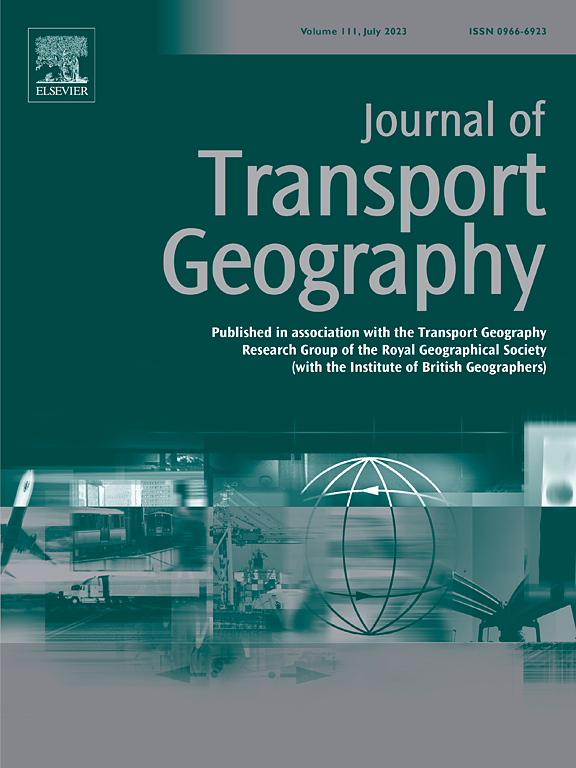Transit-driven resilience: Unraveling post-COVID-19 urban recovery dynamics.
IF 6.3
2区 工程技术
Q1 ECONOMICS
引用次数: 0
Abstract
Transit-oriented communities (TOCs), characterized by compact, walkable designs and convenient access to public transportation, have historically been inclusive, resilient, and desirable places to reside. The global COVID-19 pandemic disrupted established transportation patterns, reshaping neighborhood activity and potentially altering the appeal of TOCs. This study examines the resilience of neighborhoods surrounding subway stations in Toronto post-pandemic, comparing their recovery trajectories with control neighborhoods and exploring associated factors. Using regression model and leveraging location-based services (LBS) data from mobile phones, we assess activity levels in 2023 relative to pre-pandemic levels in 2019. Our findings suggest that, despite ongoing ridership challenges, neighborhoods near transit stations in Toronto exhibited faster recovery than those farther away, reflecting associations with transit proximity, land-use diversity, and socio-economic characteristics. The presence of industries such as accommodation, food services, arts, entertainment, healthcare, and education near transit stations was linked to a diverse economic landscape, potentially sustaining vibrant commercial areas amid shocks. Conversely, neighborhoods with a higher prevalence of workplaces for sectors with remote work potential showed slower recovery. Variables such as proximity to jobs and essential amenities, walkability, and shorter commute times were also strongly associated with higher recovery rates. These findings offer actionable insights for policymakers and urban planners, highlighting the importance of integrating public transit with diverse land uses, socio-economic attributes, and equitable urban policies to support sustainable and resilient neighborhoods in the face of future crises.
交通驱动的韧性:揭示后covid -19城市恢复动态。
以交通为导向的社区(toc),其特点是紧凑、可步行的设计和方便的公共交通,历史上一直是包容性、弹性和理想的居住地。2019冠状病毒病全球大流行扰乱了既定的交通模式,重塑了社区活动,并可能改变TOCs的吸引力。本研究考察了大流行后多伦多地铁站周围社区的恢复能力,将其恢复轨迹与对照社区进行比较,并探索相关因素。利用回归模型并利用来自手机的基于位置的服务(LBS)数据,我们评估了2023年相对于2019年大流行前的活动水平。我们的研究结果表明,尽管存在乘客挑战,但多伦多公交车站附近的社区比远离公交车站的社区恢复得更快,这反映了与公交邻近性、土地利用多样性和社会经济特征的关联。交通车站附近的住宿、食品服务、艺术、娱乐、医疗保健和教育等行业的存在与多样化的经济景观相关联,有可能在冲击中维持充满活力的商业区。相反,远程工作场所较多的社区,其复苏速度较慢。与工作地点和基本设施的距离、可步行性和较短的通勤时间等变量也与较高的康复率密切相关。这些研究结果为政策制定者和城市规划者提供了可操作的见解,强调了将公共交通与多样化的土地利用、社会经济属性和公平的城市政策相结合的重要性,以支持面对未来危机的可持续和有弹性的社区。
本文章由计算机程序翻译,如有差异,请以英文原文为准。
求助全文
约1分钟内获得全文
求助全文
来源期刊

Journal of Transport Geography
Multiple-
CiteScore
11.50
自引率
11.50%
发文量
197
期刊介绍:
A major resurgence has occurred in transport geography in the wake of political and policy changes, huge transport infrastructure projects and responses to urban traffic congestion. The Journal of Transport Geography provides a central focus for developments in this rapidly expanding sub-discipline.
 求助内容:
求助内容: 应助结果提醒方式:
应助结果提醒方式:


